1.
Introduction
We consider the following family of nonlinear oscillators
where k, h, f≠0 and g≠0 are arbitrary sufficiently smooth functions. Particular members of (1.1) are used for the description of various processes in physics, mechanics and so on and they also appear as invariant reductions of nonlinear partial differential equations [1,2,3].
Integrability of (1.1) was studied in a number of works [4,5,6,7,8,9,10,11,12,13,14,15,16]. In particular, in [15] linearization of (1.1) via the following generalized nonlocal transformations
was considered. However, equivalence problems with respect to transformations (1.2) for (1.1) and its integrable nonlinear subcases have not been studied previously. Therefore, in this work we deal with the equivalence problem for (1.1) and its integrable subcase from the Painlevé-Gambier classification. Namely, we construct an equivalence criterion for (1.1) and a non-canonical form of Ince Ⅶ equation [17,18]. As a result, we obtain two new integrable subfamilies of (1.1). What is more, we demonstrate that for any equation from (1.1) that satisfy one of these equivalence criteria one can construct an autonomous first integral in the parametric form. Notice that we use Ince Ⅶ equation because it is one of the simplest integrable members of (1.1) with known general solution and known classification of invariant curves.
Moreover, we show that transformations (1.2) preserve autonomous invariant curves for equations from (1.1). Since the considered non-canonical form of Ince Ⅶ equation admits two irreducible polynomial invariant curves, we obtain that any equation from (1.1), which is equivalent to it, also admits two invariant curves. These invariant curves can be used for constructing an integrating factor for equations from (1.1) that are equivalent to Ince Ⅶ equation. If this integrating factor is Darboux one, then the corresponding equation is Liouvillian integrable [19]. This demonstrates the connection between nonlocal equivalence approach and Darboux integrability theory and its generalizations, which has been recently discussed for a less general class of nonlocal transformations in [20,21,22].
The rest of this work is organized as follows. In the next Section we present an equivalence criterion for (1.1) and a non-canonical form of the Ince Ⅶ equation. In addition, we show how to construct an autonomous first integral for an equation from (1.1) satisfying this equivalence criterion. We also demonstrate that transformations (1.2) preserve autonomous invariant curves for (1.1). In Section 3 we provide two examples of integrable equations from (1.1) and construct their parametric first integrals, invariant curves and integrating factors. In the last Section we briefly discuss and summarize our results.
2.
Main results
We begin with the equivalence criterion between (1.1) and a non-canonical form of the Ince Ⅶ equation, that is [17,18]
Here ϵ≠0 is an arbitrary parameter, which can be set, without loss of generality, to be equal to ±1.
The general solution of (1.1) is
Here ζ0 and C1 are arbitrary constants and cn is the Jacobian elliptic cosine. Expression (2.2) will be used below for constructing autonomous parametric first integrals for members of (1.1).
The equivalence criterion between (1.1) and (2.1) can be formulated as follows:
Theorem 2.1. Equation (1.1) is equivalent to (2.1) if and only if either
or
holds. Here
The expression for G2 in each case is either
or
In all cases the functions F and G1 are given by
Proof. We begin with the necessary conditions. Substituting (1.2) into (2.1) we get
where
As a consequence, we obtain that (1.1) can be transformed into (2.1) if it is of the form (2.9) (or (1.1)).
Conversely, if the functions F, G1 and G2 satisfy (2.10) for some values of k, h, f and g, then (1.1) can be mapped into (2.1) via (1.2). Thus, we see that the compatibility conditions for (2.10) as an overdertmined system of equations for F, G1 and G2 result in the necessary and sufficient conditions for (1.1) to be equivalent to (2.1) via (1.2).
To obtain the compatibility conditions, we simplify system (2.10) as follows. Using the last two equations from (2.10) we find the expression for G1 given in (2.8). Then, with the help of this relation, from (2.10) we find that
and
Here l is given by (2.5).
As a result, we need to find compatibility conditions only for (2.12). In order to find the generic case of this compatibility conditions, we differentiate the first equation twice and find the expression for G22 and condition (2.3). Differentiating the first equation from (2.12) for the third time, we obtain (2.6). Further differentiation does not lead to any new compatibility conditions. Particular case (2.4) can be treated in the similar way.
Finally, we remark that the cases of l=0, p=0 and q=0 result in the degeneration of transformations (1.2). This completes the proof.
As an immediate corollary of Theorem 2.1 we get
Corollary 2.1. If coefficients of an equation from (1.1) satisfy either (2.3) or (2.4), then an autonomous first integral of this equation can be presented in the parametric form as follows:
Here w is the general solution of (2.1) given by (2.2). Notice also that, formally, (2.13) contains two arbitrary constants, namely ζ0 and C1. However, without loss of generality, one of them can be set equal to zero.
Now we demonstrate that transformations (1.2) preserve autonomous invariant curves for equations from (1.1).
First, we need to introduce the definition of an invariant curve for (1.1). We recall that Eq (1.1) can be transformed into an equivalent dynamical system
A smooth function H(y,u) is called an invariant curve of (2.14) (or, equivalently, of (1.1)), if it is a nontrivial solution of [19]
for some value of the function λ, which is called the cofactor of H.
Second, we need to introduce the equation that is equivalent to (1.1) via (1.2). Substituting (1.2) into (1.1) we get
where
An invariant curve for (2.16) can be defined in the same way as that for (1.1). Notice that, further, we will denote wζ as v.
Theorem 2.2. Suppose that either (1.1) possess an invariant curve H(y,u) with the cofactor λ(y,u) or (2.16) possess an invariant curve ˜H(w,v) with the cofactor ˜λ(w,v). Then, the other equation also has an invariant curve and the corresponding invariant curves and cofactors are connected via
Proof. Suppose that ˜H(w,v) is an invariant curve for (2.16) with the cofactor ˜λ(w,v). Then it satisfies
Substituting (1.2) into (2.19) we get
This completes the proof.
As an immediate consequence of Theorem 2.2 we have that transformations (1.2) preserve autonomous first integrals admitted by members of (1.1), since they are invariant curves with zero cofactors.
Another corollary of Theorem 2.2 is that any equation from (1.1) that is connected to (2.1) admits two invariant curves that correspond to irreducible polynomial invariant curves of (2.1). This invariant curves of (2.1) and the corresponding cofactors are the following (see, [23] formulas (3.18) and (3.19) taking into account scaling transformations)
Therefore, we have that the following statement holds:
Corollary 2.2. If coefficients of an equation from (1.1) satisfy either (2.3) or (2.4), then is admits the following invariant curves with the corresponding cofactors
Let us remark that connections between (2.1) and non-autonomous variants of (1.1) can be considered via a non-autonomous generalization of transformations (1.2). However, one of two nonlocally related equations should be autonomous since otherwise nonlocal transformations do not map a differential equation into a differential equation [5].
In this Section we have obtained the equivalence criterion between (1.1) and (2.1), that defines two new completely integrable subfamilies of (1.1). We have also demonstrated that members of these subfamilies posses an autonomous parametric first integral and two autonomous invariant curves.
3.
Examples
In this Section we provide two examples of integrable equations from (1.1) satisfying integrability conditions from Theorem 2.1.
Example 1. One can show that the coefficients of the following cubic oscillator
satisfy condition (2.3) from Theorem 2.1. Consequently, Eq (3.1) is completely integrable and its general solution can be obtained from (2.2) by inverting transformations (1.2). However, it is more convenient to use Corollary 2.1 and present the autonomous first integral of (3.1) in the parametric form as follows:
where w is given by (2.2), ζ is considered as a parameter and ζ0, without loss of generality, can be set equal to zero. As a result, we see that (3.1) is integrable since it has an autonomous first integral.
Moreover, using Corollary 2.2 one can find invariant curves admitted by (3.1)
With the help of the standard technique of the Darboux integrability theory [19], it is easy to find the corresponding Darboux integrating factor of (3.1)
Consequently, equation is (3.1) Liouvillian integrable.
Example 2. Consider the Liénard (1, 9) equation
Here summation over repeated indices is assumed. One can show that this equation is equivalent to (2.1) if it is of the form
where μ is an arbitrary constant.
With the help of Corollary 2.1 one can present the first integral of (3.6) in the parametric form as follows:
where w is given by (2.2). Thus, one can see that (3.5) is completely integrable due to the existence of this parametric autonomous first integral.
Using Corollary 2.2 we find two invariant curves of (3.6):
and
The corresponding Darboux integrating factor is
As a consequence, we see that Eq (3.6) is Liouvillian integrable.
Therefore, we see that equations considered in Examples 1 and 2 are completely integrable from two points of view. First, they possess autonomous parametric first integrals. Second, they have Darboux integrating factors.
4.
Conclusions and discussion
In this work we have considered the equivalence problem between family of Eqs (1.1) and its integrable member (2.1), with equivalence transformations given by generalized nonlocal transformations (1.2). We construct the corresponding equivalence criterion in the explicit form, which leads to two new integrable subfamilies of (1.1). We have demonstrated that one can explicitly construct a parametric autonomous first integral for each equation that is equivalent to (2.1) via (1.2). We have also shown that transformations (1.2) preserve autonomous invariant curves for (1.1). As a consequence, we have obtained that equations from the obtained integrable subfamilies posses two autonomous invariant curves, which corresponds to the irreducible polynomial invariant curves of (2.1). This fact demonstrate a connection between nonlocal equivalence approach and Darboux and Liouvillian integrability approach. We have illustrate our results by two examples of integrable equations from (1.1).
Acknowledgments
The author was partially supported by Russian Science Foundation grant 19-71-10003.
Conflict of interest
The author declares no conflict of interest in this paper.











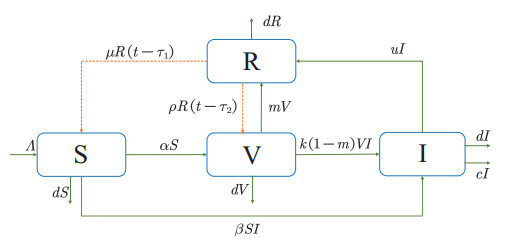
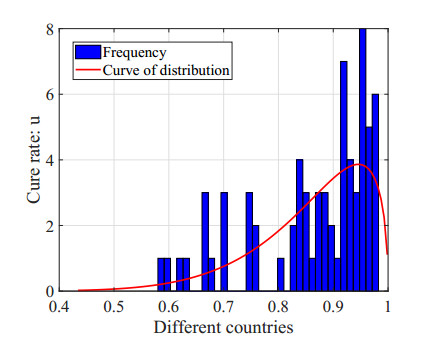
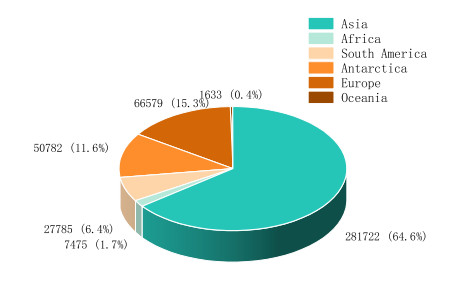
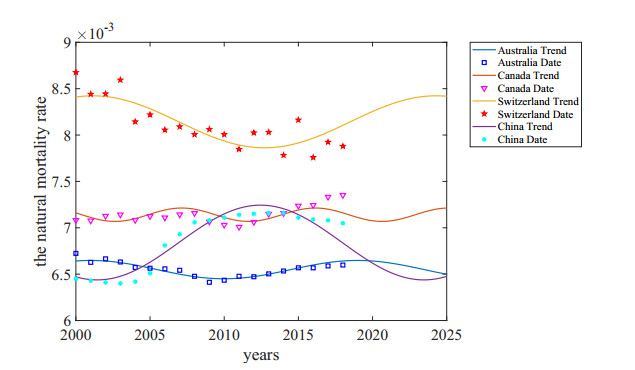
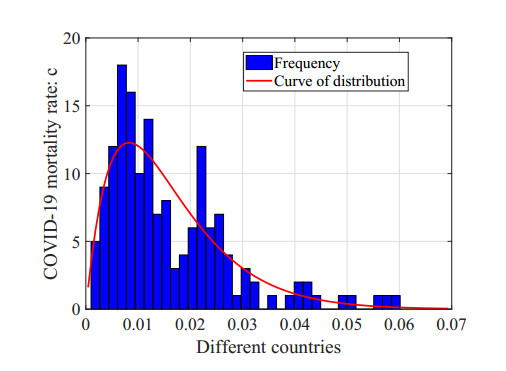
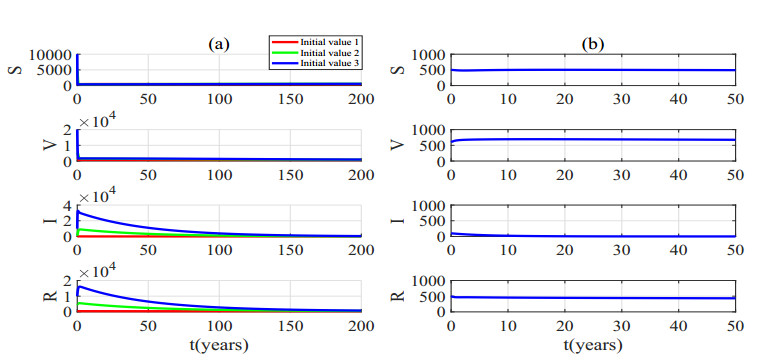
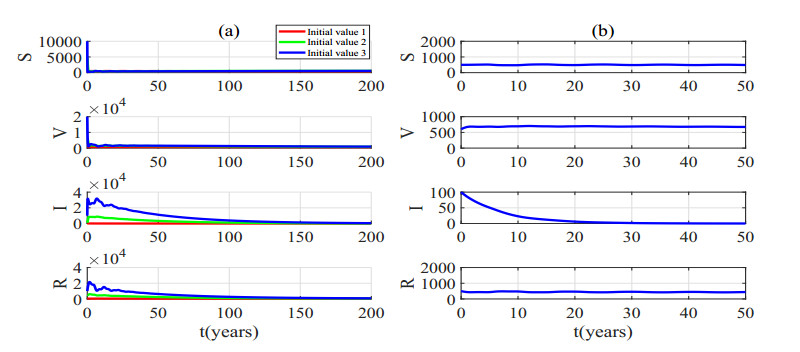
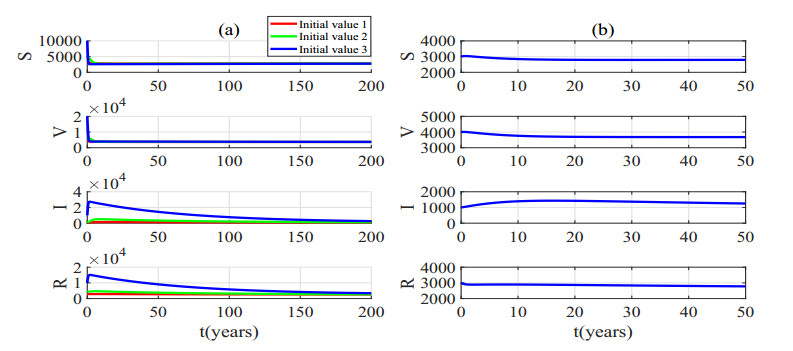
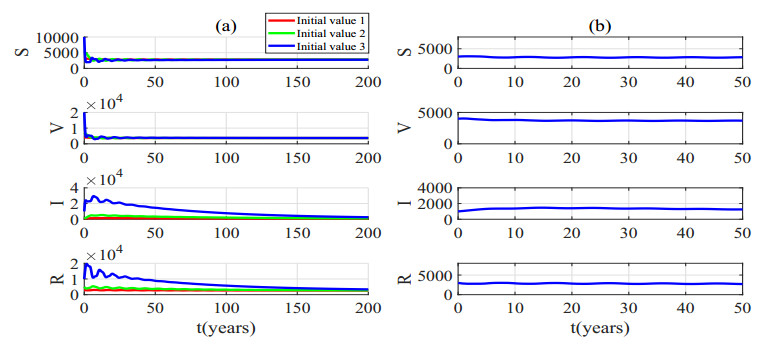
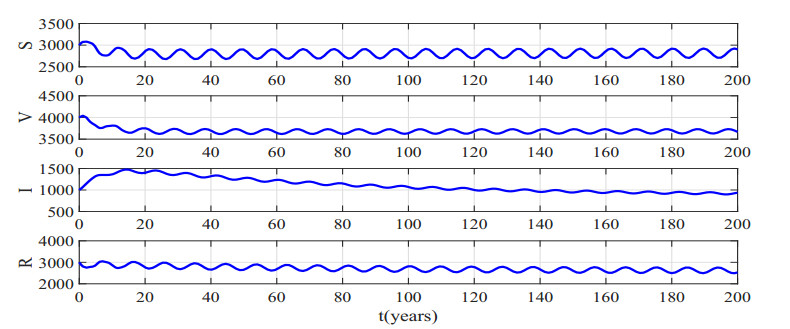



 DownLoad:
DownLoad: